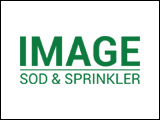System-wide improvements to the cancer patient journey have shortened wait times to diagnose and treat patients suspected to have breast cancer. This announcement was made by Health Minister Sharon Blady.
“As a survivor, I know how scary it can be to hear a doctor tell you that you might have cancer,” said Minister Blady. “I’m proud that our investments and the hard work of so many people to improve services are paying off in shorter wait times for Manitobans.”
For patients who were referred to a cancer hub between January 2013 to March 2014 because of a new diagnosis or suspicion of cancer, two-thirds went from suspicion to treatment within 60 days. For breast cancer, 85 per cent of patients received treatment within 60 days.
“The data shows that when health-care providers work together on specific cancer pathways, improvements can be made to wait times,” said Dr. Sri Navaratnam, president and chief executive officer, CancerCare Manitoba, and co-chair, IN SIXTY Cancer Patient Journey Initiative. “Early results are a strong indication that we are on the right track and that wait times will continue to come down.”
The breast cancer pathway and direct referral for breast cancer diagnosis are two of the improvements to the cancer patient journey in Manitoba.
“We will continue to work towards reducing complexities in the system with a focus on improving access to care for patients,” said Dr. Brock Wright, senior vice-president, clinical services, chief medical officer, Winnipeg Regional Health Authority, and co-chair, IN SIXTY Cancer Patient Journey Initiative.
A cancer pathway is a medical road map that plots every test and referral that is required to confirm or rule out cancer. The tool gives physicians and nurse practitioners all the information they need to diagnose breast cancer. For patients, the pathway plots the ideal timeline to get from suspicion to treatment within 60 days.
Direct referrals shorten the patient’s journey from suspicion to diagnosis. When a radiologist reads a mammogram or breast ultrasound and recommends more imaging or a biopsy, patients are now referred directly for the next test.
“Creating a process for direct referrals for breast imaging helps patients by reducing the wait times between tests,” said Jim Slater, chief executive officer, Diagnostic Services Manitoba. “We’re pleased to be part of the work underway to improve care for patients.”
Slater noted this process means the patient does not have to revisit the primary care provider for further referrals.
“These kinds of improvements are just what we were hoping would happen when work started on the Cancer Patient Journey Initiative,” said Minister Blady. “Working with our partners, we’ll continue to make strategic investments and system improvements to further reduce waits for Manitobans with all kinds of cancers.”
The minister noted many partners are involved with the Manitoba government in this work, including CancerCare Manitoba, regional health authorities, Diagnostic Services Manitoba, Manitoba eHealth, radiologists, primary care physicians and cancer specialists.



